Report on 'World The Internet in 2018' summarizing the communication speed of mobile and fixed Internet in the world

by rawpixel
" Speedtest " which can check the line speed of the Internet just by accessing from the browser publishes a report which summarizes the Internet environment of 2018 separately for each country. From the report, you can see not only "Which country is the most comfortable Internet environment in the world?" But also which country has a high-speed Internet environment.
The World's Internet in 2018: Faster, Modernizing and Always On
http://www.speedtest.net/insights/blog/2018-internet-speeds-global/
The line speed of the Internet can be divided into two types, download (down) and upload (uplink), and it is also possible to classify it as mobile or broadband . The World's Internet in 2018 is based on the data collected at Speedtest Intelligence through broadband and mobile line speeds through December 2017 through November 2018 for about a year.
The following data shows the average speed of mobile lines. The average download speed of the mobile line is 22.82 Mbps and the upload speed is 9.19 Mbps. The download speed is 15.2% faster than the data of 2017, and the upload speed is 11.6% faster.
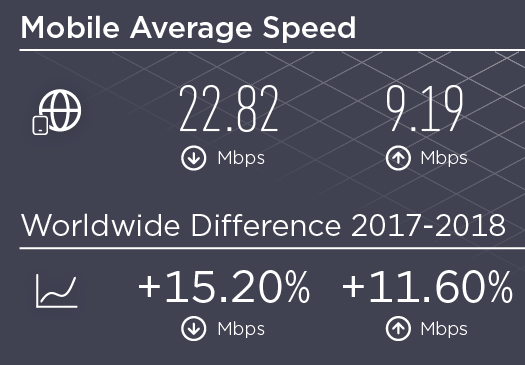
The average speed of mobile lines is classified by Android and iOS as follows. The download speed is 27.84 Mbps for iOS, while Android is 21.35 Mbps. The upload speed is 10.6 Mbps for iOS and 8.73 Mbps for Android. Android line speed is slowing down both downloading and uploading. This is a testament to the fact that Android is gaining more popularity in emerging countries with slower internet speeds.
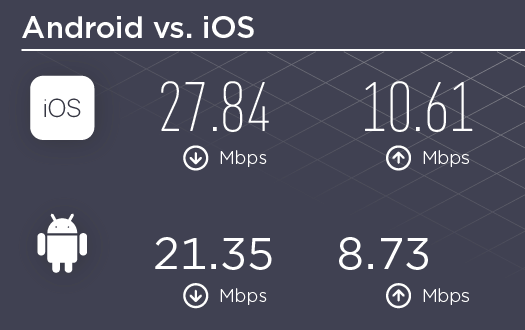
However, the download speed itself is 19% higher than the previous year for Android and 15.1% higher for iOS than the previous year, both of which are speeding up the communication speed.
The following data shows the world's average line speed in fixed broadband. The download speed is 46.12 Mbps, the upload speed is 22.44 Mbps, and when comparing only by numbers, the speed of the fixed broadband line is more than twice as fast as the mobile line. In addition, the line speed has increased by 26.4% on the previous year and upload speed by 26.5%.

The top five countries where mobile lines were fast in 2018 are the following countries. Norway (63.19 Mbps), Iceland (58.68 Mbps), Qatar (55.17 Mbps), Singapore (54.71 Mbps), Netherlands (53.42 Mbps) in descending order of download speed.
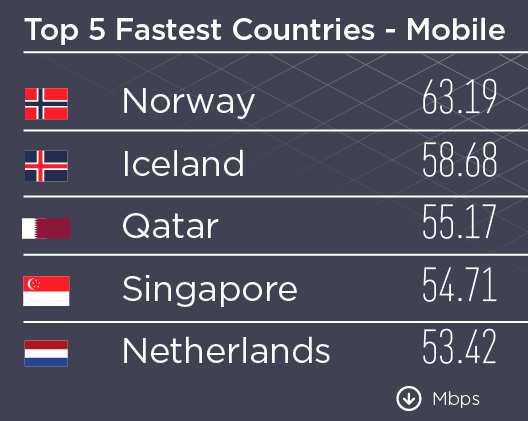
There are five countries and regions where fixed broadband lines were fast in 2018 as follows. Singapore (175.13 Mbps), Iceland (153.03 Mbps), Hong Kong (138.31 Mbps), South Korea (114.67 Mbps), Romania (109.9 Mbps) in descending order of download speed. Singapore and Iceland are both the top five in both mobile and fixed broadband, and it seems that these two countries have the world's best Internet environment.
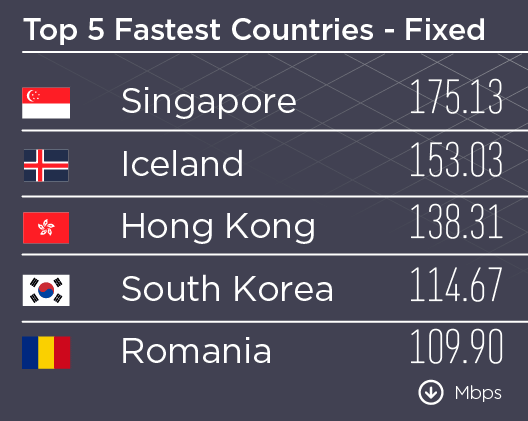
The average download speed of mobile lines was the most improved year over year in the following five countries. Costa Rica increased by 194.6% (13.4 Mbps), Myanmar increased by 121.8% (21.81 Mbps), Saudi Arabia increased by 113.2% (22.04 Mbps), Iraq increased 92.3% (7.49 Mbps) , Ukraine increased by 82.1% (14.48 Mbps). In Costa Rica, the download speed is nearly three times faster than the previous year, and the browsing on the mobile terminal should be dramatically comfortable.

In addition, the average upload speed of mobile lines was the most improved compared with the previous year in five countries of Bangladesh (179.2%), Ukraine (172.5%), Costa Rica (163.4%), Myanmar (146.9%), Iraq (126.7%) was.
The following data shows the five countries with the most improved average download speed of fixed broadband lines over the previous year. Paraguay increased by 268.6% (27.05 Mbps), Guyana increased by 113.5% (14.94 Mbps), Libya increased by 108% (6.87 Mbps), Malaysia increased 89.5% (35.83 Mbps) in the order of the download speed faster than the previous year , Laos increased by 76.2% (14.28 Mbps).
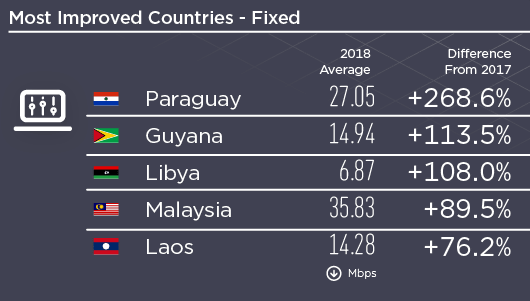
Libya (176.4%), Guyana (116.1%), Malaysia (95.2%), Belize (88.9%), Iraq (76.8%) were the most significant improvements in the average upload speed of fixed broadband lines over the previous year.
The increase in mobile line speed seems to be a major reason why the 4 th generation mobile communication system (4 G) is spread all over the world. The following map shows the penetration rate of 4G on the map, the higher the color, the faster the communication speed. In addition, the map has become a GIF image and you can check the spreading stage by clicking.
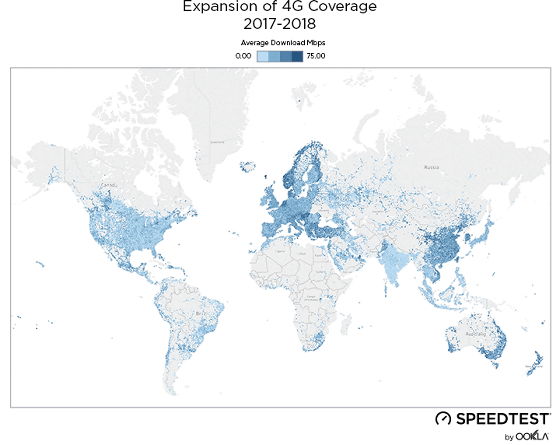
Costa Rica, Saudi Arabia, and Myanmar, where the download speed of mobile lines has become faster, shows that the spread of 4G has a big influence.
The following map shows images of fixed broadband penetration rate exceeding 750 Mbps. When clicked, the GIF image opens, you can see how the penetration rate expanded. In 2017, a fixed broadband environment exceeding 750 Mbps spread in 60 countries, and in 2018 16 countries newly fulfilled this requirement.
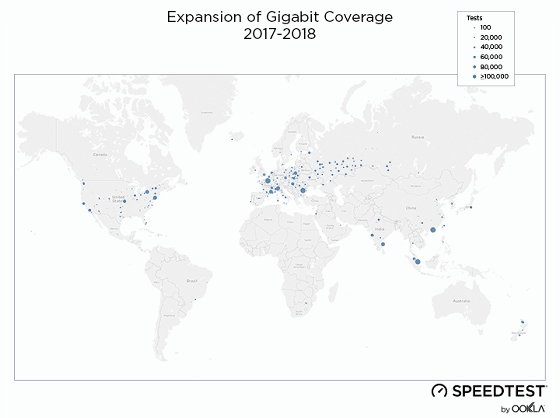
In terms of cities, the largest number of fixed broadband users exceeding 750 Mbps has increased in India / New Delhi (16908% increase), India / Chennai (7481% increase), France · Cormeille - Zain - Parisi (6480% Growth in Poland · Gdańsk (6338% increase), Italy · Rome (4909% increase), UK · Lancashire (3962% increase), Japan · Ota (3240% increase), Brazil · Sao Paulo (2947% increase), China · Hangzhou (up 266%), Romania · Turda (2636%).
The following image shows average data usage (MB) per hour for fixed broadband line (Fixed) and mobile line (Mobile). It is over 20 to 21 o'clock that the data usage will be the highest.

Related Posts:
in Note, Posted by logu_ii







